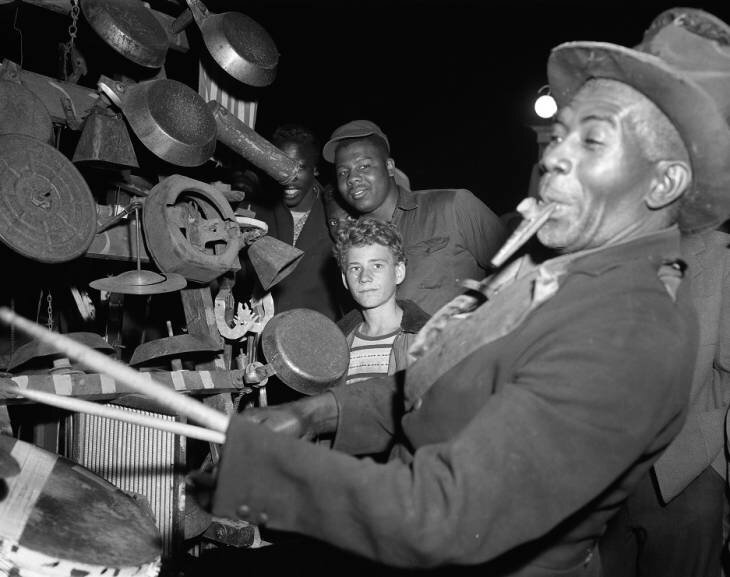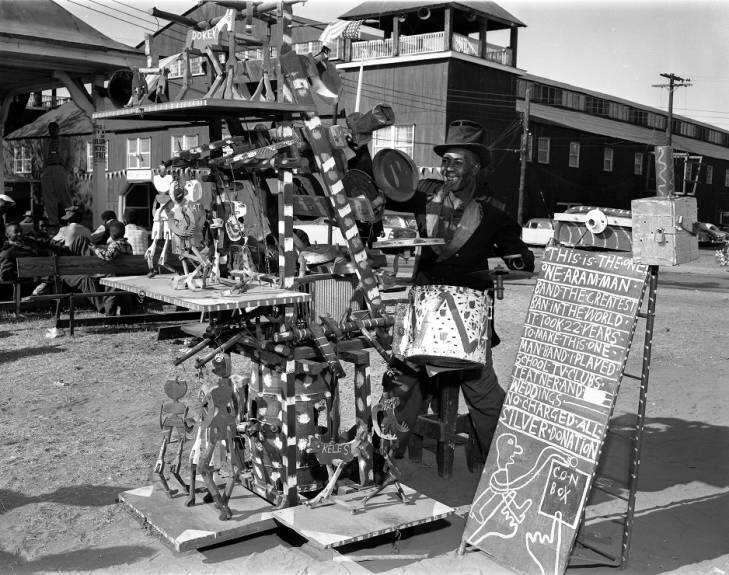The Colored State Fair
Betty Louise Bookert, Valery Bookert, Mae Spann, and Peggy Bookert, left to right, ride the Ferris wheel on School Day at the 51st Negro State Fair in 1955. Photo Courtesy of State Newspaper Photograph Archives, Richland Library, Columbia, SC.
The Segregated Fair, 1890-1971
The Colored State Fair, later called the Negro State Fair and then the Palmetto State Fair, opened annually the week after the whites-only South Carolina State Fair. A state fair had existed before the Civil War, supported by an agricultural organization and the state legislature. When Maj. Gen. William T. Sherman’s troops ransacked and burned Columbia, the fair buildings were destroyed. In 1869, a whites-only fair —supported by the city of Columbia, the legislature, and the newly organized State Agricultural and Mechanical Society of South Carolina — began with new buildings on Elmwood Avenue. The fair moved to its current home on Rosewood Drive in 1904.
In January 1890, the new Colored State Fair Association founded the year before, held the Colored State Fair. In 1904, Richard Carroll — formerly enslaved in the Barnwell District and later an evangelist, a military chaplain, and a founder of newspapers, an industrial-training home for children, and a black employment bureau — began a funded Colored State Fair with the help of other black businessmen. See a 1927 fair ad in The Palmetto Leader.
In the 1950s, when the photos here were taken, attractions at what was now called the Negro State Fair included a contest for the marching bands of black high schools; exhibit buildings with livestock and poultry and livestock judging, such as the Fat Barrow hog show; a four-lane midway provided by Prell’s Broadway Shows, with rides such as the Wild Mouse and the Paratrooper; Big Thursday football games; and, according to The State newspaper, “the largest wild animal show on the road, an astounding freak show, a minstrel, and many other entertaining amusements.” Attendance of 100,000 was expected on the October 1959 day dedicated to schoolchildren.
The Civil Rights Act of 1964 ended lawful segregation in public places. The Negro State Fair continued, its association officials telling The State in November 1964 that they felt reluctant to give up their fair and their “control of the policy-making for one in which they have no such control.” In 1970, what was now the Palmetto State Fair wasn’t held, and on December 11, 1971, the Palmetto State Fair Association officially dissolved. The South Carolina State Fair hadn’t actually desegregated but was competing, offering “Negro Days.” The first desegregated State Fair was held in 1971, according to Roger E. Stroup’s Meet Me at the Rocket: A History of the South Carolina State Fair.





